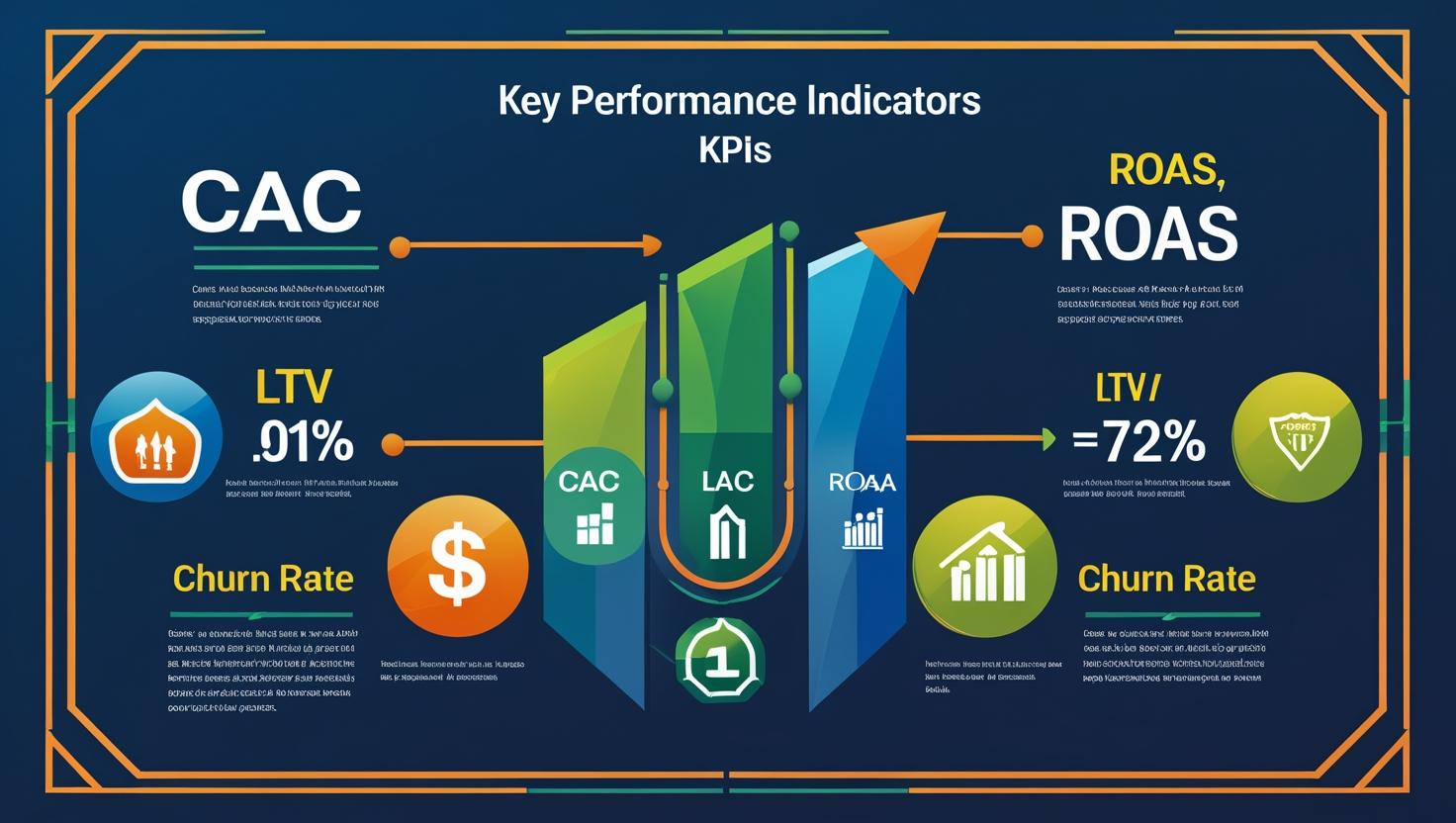Key Performance Indicators (KPIs) are vital metrics that help businesses measure performance, profitability, and sustainability. In the fast-paced world of digital marketing, eCommerce, SaaS, and subscription services, a few KPIs stand out as essential: CAC (Customer Acquisition Cost), LTV (Lifetime Value), ROAS (Return on Ad Spend), and Churn Rate.
If you want to grow your business strategically and sustainably, it’s crucial to understand what these KPIs mean, how they’re calculated, and what insights they offer.
1. Customer Acquisition Cost (CAC)
What is CAC?
Customer Acquisition Cost refers to the total cost of acquiring a new customer. This includes all sales and marketing expenses such as ads, content creation, salaries, software tools, and outreach efforts.
Formula:
ini
CopyEdit
CAC = Total Sales & Marketing Costs / Number of New Customers Acquired
Why it matters:
Helps you understand how much you're spending to bring in each new customer.
Crucial for budgeting and determining the efficiency of marketing campaigns.
Can highlight if you're overspending on low-return channels.
Example:
If your company spent $5,000 on ads, tools, and salaries and gained 100 customers, your CAC would be $50.
2. Lifetime Value (LTV)
What is LTV?
Lifetime Value (also known as CLV – Customer Lifetime Value) is the total revenue you expect to earn from a customer over the entire span of their relationship with your brand.
Formula (simple version):
ini
CopyEdit
LTV = Average Purchase Value × Purchase Frequency × Customer Lifespan
In subscription businesses:
ini
CopyEdit
LTV = Average Revenue Per User (ARPU) × Average Customer Lifetime (in months/years)
Why it matters:
Helps you determine how much you can afford to spend on customer acquisition (CAC).
Gives a long-term view of customer profitability.
A high LTV allows for aggressive growth strategies and increased ad spend.
Tip: A healthy business should aim for an LTV:CAC ratio of 3:1 or higher.
3. Return on Ad Spend (ROAS)
What is ROAS?
ROAS measures the revenue generated for every dollar spent on advertising. It’s a critical metric for paid media campaigns (Google Ads, Facebook Ads, etc.).
Formula:
ini
CopyEdit
ROAS = Revenue from Ads / Cost of Ads
Why it matters:
Helps you evaluate the effectiveness of advertising campaigns.
Useful for real-time campaign adjustments and scaling what works.
Higher ROAS = better ad efficiency.
Example:
If you earned $10,000 from a $2,000 ad campaign, your ROAS is 5:1 (or 500%).
Ideal ROAS: Depends on industry and margin, but anything above 3:1 is often considered strong.
4. Churn Rate
What is Churn Rate?
Churn rate refers to the percentage of customers who stop doing business with you over a given time period. It’s especially important for SaaS, memberships, and subscription-based models.
Formula:
sql
CopyEdit
Churn Rate = (Customers Lost During Period / Total Customers at Start of Period) × 100
Why it matters:
High churn can signal poor customer experience, product-market fit, or lack of engagement.
Low churn contributes to long-term profitability and high LTV.
Reducing churn is often more cost-effective than acquiring new customers.
Example:
If you start the month with 500 customers and lose 25, your churn rate is 5%.
Target:
A monthly churn rate below 5% is good in most industries. For SaaS, even 2-3% may be too high depending on the business model.
How These KPIs Work Together
Understanding these KPIs in isolation is helpful—but when analyzed together, they offer a clear picture of your business health.
Example:
If your CAC is high and your LTV is low, you're likely overspending on unprofitable customers.
If ROAS is strong but churn is high, you're acquiring the wrong audience.
Final Thoughts
These KPIs aren’t just numbers—they’re strategic tools. Monitoring and optimizing your CAC, LTV, ROAS, and Churn Rate can help you:
Improve marketing ROI
Scale sustainably
Increase customer loyalty
Make data-driven decisions
In today’s competitive digital landscape, smart businesses don’t just track performance—they understand it.

